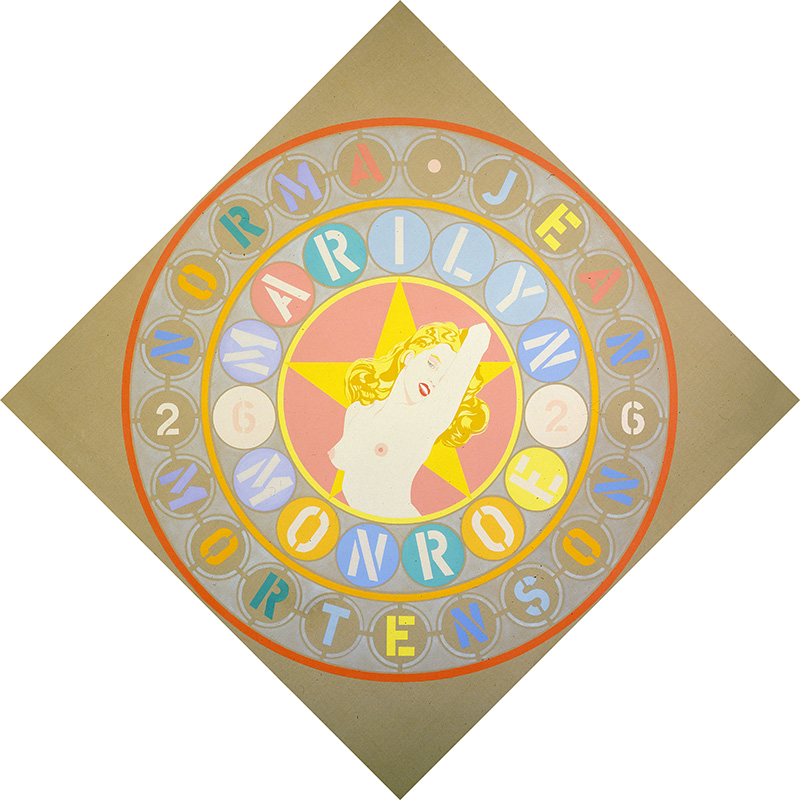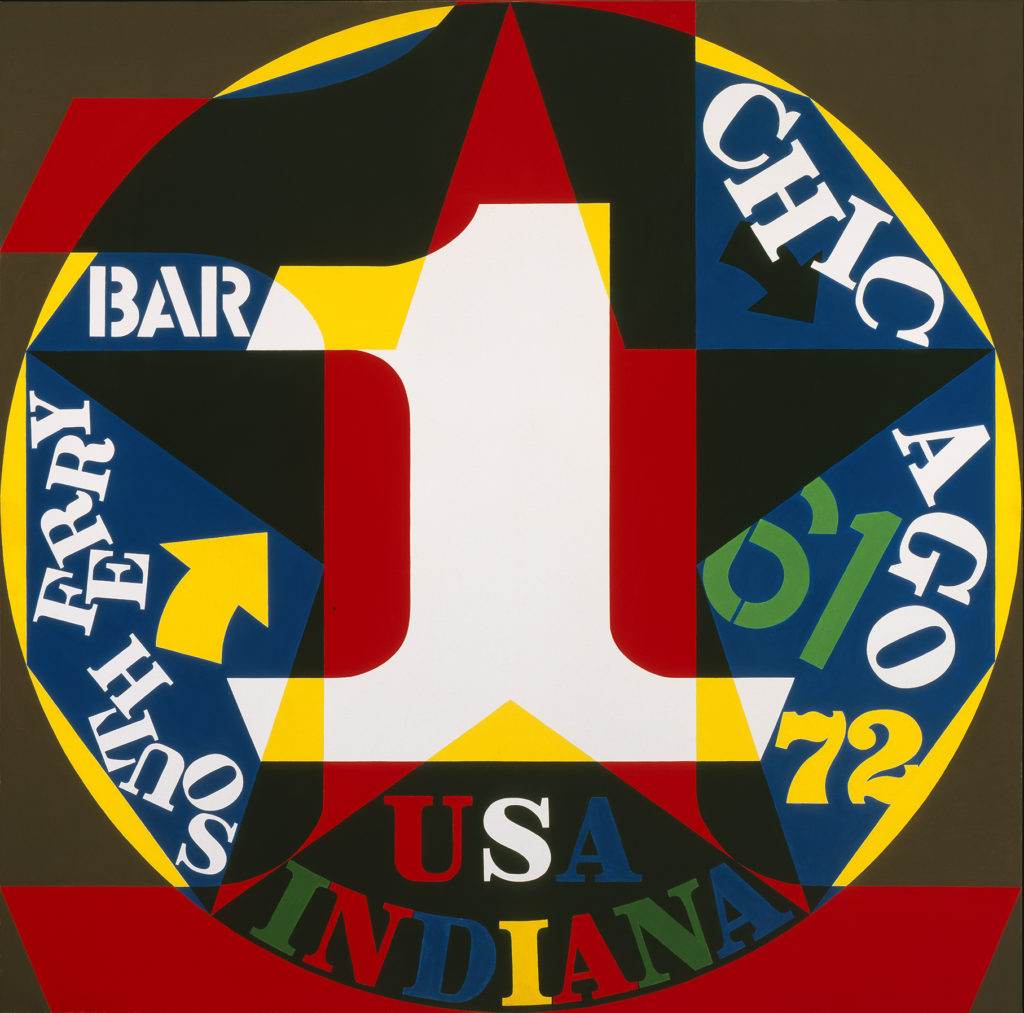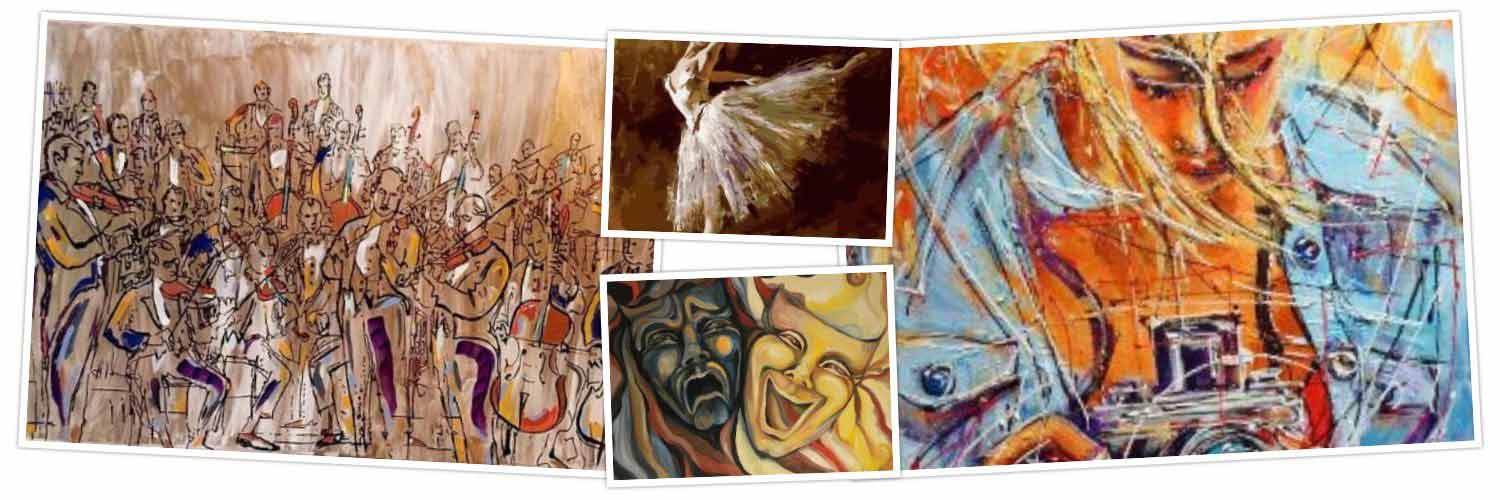The McNay Explores Robert Indiana’s Legacy
By JASMINA WELLINGHOFF, Editor
Robert Indiana’s famous LOVE sculpture featuring the tilted “O” started as a modest Christmas card project for the New York-based Museum of Modern Art in 1965. It eventually became his most recognizable work. Today, there are dozens of LOVE sculptures in cities and countries in Asia, Europe and the Americas, even “translated” versions, such as AMOR in Spain.

And there’s one at the McNay Art Museum as well. But right now, there’s a lot more of Indiana’s work to be seen at the McNay than just LOVE. Titled Robert Indiana: A Legacy of Love, the exhibit that opened Oct. 15, “honors the life, art and resounding legacy of the late Pop icon through more than 75 paintings, prints, sculptures, costume designs and digital artwork.”
It is not the first time that the museum has put the spotlight on the reclusive artist’s work. In fact, it featured it as recently as 2013. Why another show?
“In 2013 the Whitney Museum organized a major survey of Robert Indiana, the first such survey in fact. The McNay was the other venue for the exhibit because we have had a long history with Robert Indiana and we were also lenders to the New York show,” explained René Paul Barilleaux, head of curatorial affairs at the McNay.
The” long history” started with a friendship between Indiana and San Antonio’s big art supporter and collector Robert Tobin, who donated a number of the artist’s works to the budding McNay Museum where Indiana had his first San Antonio solo show in 1968. It was the year of HemisFair and Indiana even designed a poster for the still-remembered world fair. The museum currently owns more than a hundred works by the Pop Art artist.

“So, because we have such deep holdings and because we have this history, we wanted to take another look at this artist, said Barilleaux. “We realized that there is a really strong connection between what he was doing back in the 60s and what’s going on today. He’s merging image and text. LOVE is both an image and text. And today people are sending images from their phones, emojis, and they are merging text and images in short, quick messages in a very similar way. And, of course, many artists are doing it, too.”
In the current exhibit, Indiana’s work is shown together with pieces by other Pop artists such as Andy Warhol and Roy Lichtenstein, but also with contemporary artists whose art merges text & image to convey its meaning. Included in the show are Mel Bochner, Devorah Kass, Glenn Ligon, Stephanie Patton and others. In a nice touch, a number of San Antonio contemporary artists are there as well – Ethel Shipton, Jesse Amado, Alejandro Diaz and Gary Sweeney, who is represented by a large sculpture/installation just outside of the Stieren Exhibition Center.

A Legacy of Love consists of several sections that explore the artist’s innovative use of text-image juxtapositions in different contexts. You first encounter Icons, a section featuring depictions of pop celebrities such as an image of Marilyn Monroe titled “The Metamorphosis of Norma Jean Mortenson,” and similar pieces by other Pop artists, featuring other “icons” of the time, like Elvis Presley and Elizabeth Taylor. In the middle of that gallery stands Claes Oldenburg’s soft sculpture “French Fries with Ketchup,” probably a good example of what Pop artists set out to do- show that ordinary objects and popular culture can be the subject of fine art but they often presented them with a dollop of irony and even sarcasm.
Text & image pieces dominate the middle space, with Indiana’s “portrait” compositions commenting both on American culture and his own life. These paintings are rendered in vivid colors, usually featuring semi-abstract images of circular shapes on which and within which short words, numbers and symbols are depicted.
“A lot of his work is autobiographical,” said Barilleaux. “He is really interested in numerology and there’s a lot of symbolism and coding in his art, often self-referential. Last night we had an online event and somebody asked about the big paintings of LOVE and HOPE. In my mind, Robert Indiana had a very dark life but this show is focused on the optimistic part of his life. But if you want to explore the dark part, I think that his obsession with love and later with hope, these were aspirational things for him, things he was longing for. He was making them real and tangible by painting them.”

A section of the exhibit shows Indiana’s vivid pieces inspired by Marsden Hartley, a Maine-based artist from the previous generation whose work Indiana discovered when he moved to the island town of Vinalhaven off the coast of Maine.
And, since he was also a costume and set designer, a special display is devoted to his work for “The Mother of Us All,” Gertrude Stein’s opera about Susan B. Anthony and the passage of the 19th amendment to the constitution giving women the right to vote.
The final section showcases “a legacy of language” and Indiana’s influence on artists who came after him. It is in this section that you will find the digital artworks of New York artist Annika Hansteen-Izora, especially commissioned for the current exhibit, apparently something the McNay had never done before. These consist of “messages” like “We Take Care of Us” and “Black Joy Sacred” formulated in stylized lettering on colored backgrounds.
“This is not just a show of Robert Indiana’s work, it’s a show about how Indiana was part of this context and how he influenced future generations of artists,” noted Barilleaux.” It puts Indiana in a historical context. That’s reflected in the title of the exhibit. It’s about legacy and influence.”
Most exhibited works come from the McNay’s own collection, plus loans from the Whitney Museum of American Art, San Francisco Museum of Modern Art, the Blanton Museum of Art at UT Austin and from private collections in San Antonio. In addition to Barilleaux, the curatorial team includes a museum studies intern, Alexis Meldrum, assistant curator Lauren Thompson and Edward Hayes, exhibitions senior manager. The show closes Jan. 24.
The McNay Art Museum, 6000 N. Braunfels Ave.; admission $10-$20, free for members, children under 12 and a few other groups; 210-824-5368
